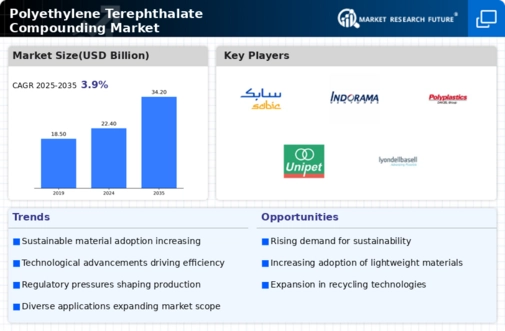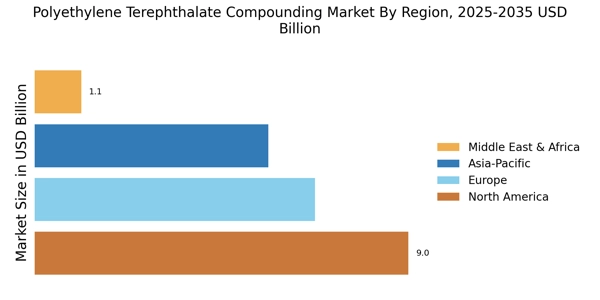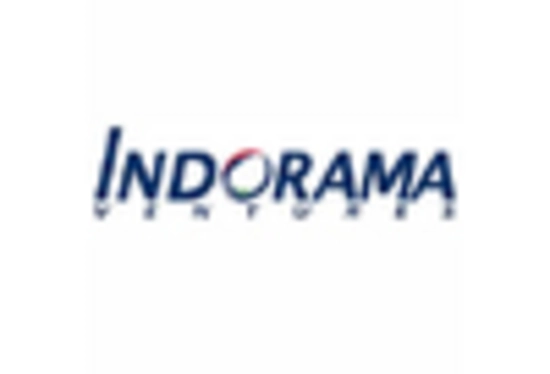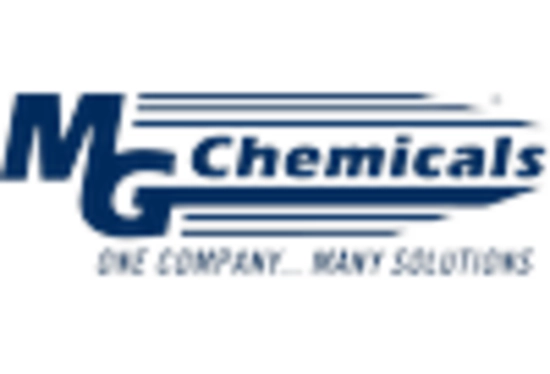Growth of the E-commerce Sector
The rapid expansion of the e-commerce sector is contributing to the growth of the Polyethylene Terephthalate Compounding Market. As online shopping continues to gain traction, the demand for efficient and sustainable packaging solutions is on the rise. PET compounds are favored for their lightweight and durable characteristics, making them ideal for shipping materials. Market analysis indicates that the e-commerce packaging market is projected to grow by 20% over the next few years, which will likely increase the demand for PET-based packaging solutions. This trend underscores the importance of adapting compounding processes to meet the evolving needs of the packaging industry, thereby driving further growth in the PET compounding market.
Rising Demand for Sustainable Materials
The increasing emphasis on sustainability is driving the Polyethylene Terephthalate Compounding Market. As consumers and manufacturers alike seek eco-friendly alternatives, the demand for recycled PET and bio-based PET is surging. This shift is evident in the growing number of companies committing to sustainable practices, with projections indicating that the market for recycled PET could reach USD 10 billion by 2026. The compounding of PET allows for the incorporation of recycled materials, thus enhancing the appeal of products made from this polymer. Furthermore, regulatory frameworks promoting the use of sustainable materials are likely to bolster market growth, as companies strive to meet compliance standards while appealing to environmentally conscious consumers.
Expanding Applications Across Industries
The versatility of polyethylene terephthalate is propelling its use across various industries, thereby driving the Polyethylene Terephthalate Compounding Market. From packaging to automotive and electronics, the applications of PET compounds are expanding rapidly. In the packaging sector, for example, the demand for lightweight and durable materials is increasing, with PET being a preferred choice due to its excellent barrier properties. Additionally, the automotive industry is increasingly utilizing PET compounds for interior components, which is expected to grow at a rate of 4% annually. This diversification of applications not only enhances market potential but also encourages innovation in compounding techniques to meet specific industry requirements.
Regulatory Support for Recycling Initiatives
Regulatory frameworks supporting recycling initiatives are playing a crucial role in shaping the Polyethylene Terephthalate Compounding Market. Governments worldwide are implementing policies aimed at reducing plastic waste and promoting recycling, which directly impacts the demand for recycled PET. For instance, mandates for increased recycled content in packaging materials are becoming more common, encouraging manufacturers to invest in PET compounding technologies that incorporate recycled materials. This regulatory support is expected to drive market growth, with estimates suggesting that the recycled PET market could account for over 30% of the total PET market by 2027. Such initiatives not only foster environmental sustainability but also create new opportunities for innovation within the compounding sector.
Technological Innovations in Compounding Processes
Technological advancements in compounding processes are significantly influencing the Polyethylene Terephthalate Compounding Market. Innovations such as improved extrusion techniques and advanced blending technologies are enhancing the efficiency and quality of PET compounds. These developments not only reduce production costs but also improve the performance characteristics of the final products. For instance, the introduction of high-performance additives can enhance the mechanical properties of PET, making it suitable for a wider range of applications. Market data suggests that the adoption of these technologies could lead to a compound growth rate of approximately 5% over the next five years, indicating a robust trajectory for the industry.


















Leave a Comment